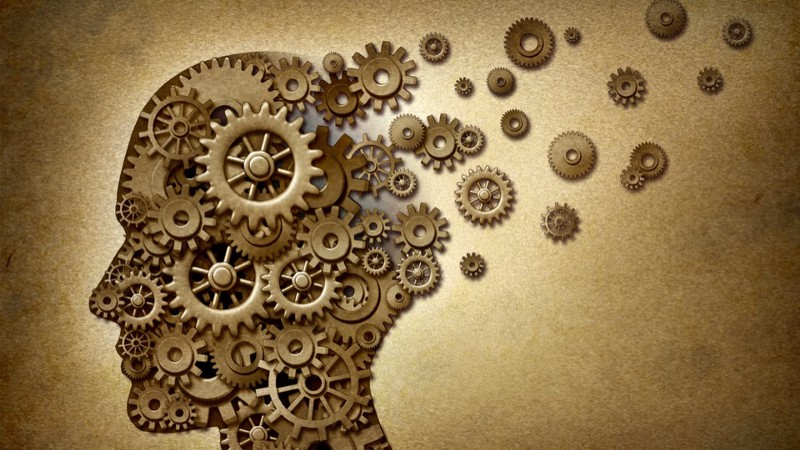A Lop-sided Spiritualist needs to see how his lop-sidedness (towards areas spiritual) causes one or more of the other areas of his life – personal, relational and material – to suffer. We saw a few specific beliefs of such an over-spiritualist here and also saw how the first game-changing step in order to be less lop-sided is to open up to universal truths, as the heart sees it and not remain stuck to conditioned beliefs, as the mind sees it. Opening up to the genuine truths could help him live a more multi-dimensional life. So far so good.
But opening up to the truth is often not so easy or seamless. There is a hitch there. Let’s look at what this hitch is. Heard of ‘Cognitive Dissonance’?
WHAT IS ‘COGNITIVE DISSONANCE’?
Wikipedia defines it thus:
In the field of psychology, cognitive dissonance is the mental discomfort (psychological stress) experienced by a person who simultaneously holds two or more contradictory beliefs, ideas, or values. The occurrence of cognitive dissonance is consequence of a person’s performing an action that contradicts personal beliefs, ideals, and values; and also occurs when confronted with new information that contradicts said beliefs, ideals, and values.
In A Theory of Cognitive Dissonance (1957), Leon Festinger proposed that human beings strive for internal psychological consistency in order to mentally function in the real world. That a person who experiences internal inconsistency tends to become psychologically uncomfortable, and so is motivated to reduce the cognitive dissonance: either by changing parts of the cognition, to justify the stressful behavior; or by adding new parts to the cognition that causes the psychological dissonance; and by actively avoiding social situations and contradictory information that are likely to increase the magnitude of the cognitive dissonance.
You can find many examples here. To cite a typical example, a man who revels in his smoking habit when elaborately apprised as to how smoking causes cancer, either opens up to this new truth and quits his smoking or shies away from it under the shield of a fresh argument: ‘Inhaling the air from living in a polluted city like this is like inhaling a dozen cigarettes a day. How does it matter if I smoke a few more?’ This is a classic case of hyper-rationalising (new part to the cognition) in order to avoid the discomfort of cognitive dissonance that a smoker faces when his smoking habit (a core belief) is met with new information (possibility of cancer).
For every person who opens up to the truth for what it is, there would be a dozen who would shy away from it through an additional layer of intellectualisation. This is precisely the tendency that the spiritualist has to guard against.
CD FOR THE OVER-SPIRITUALIST
With reference to our context, Cognitive Dissonance (CD) is the discomfort experienced when an over-spiritualist’s less-than-optimal belief or habit is challenged by a contrarian truth. (Exactly the feeling that a lop-sided spiritualist would get if he would allow himself to see sense in the five points we covered here) And as we saw, Cognitive Dissonance (CD) is generally met by bringing in another detrimental belief that temporarily assuages this discomfort.

In the face of the contrarian evidence that life is designed to be embraced multi-dimensionally (with enough relevance to the personal, relational and material spheres of life besides the spiritual), an over-spiritualist could take a flight into finding justifications in dated scriptures, zealous preceptors or in his own obstinate argument of seeing his practices and his world-view as the only way to rest in the bliss of the soul, well above the ‘muck’ of the world. This is his way of tempering his cognitive dissonance.
THE ESCAPE HATCH
Fortunately, there is an escape hatch, should the spiritualist be committed to it. I have developed a four-step COGNITIVE DISSONANCE BUSTER (CDB) to sail one through this – it begins with identification of the trait/belief (step 1), allowing the inner reinforcing argument (step 2), migrating to a more truthful word-view (step 3) followed by a more truthful stand (step 4).
To give you direct examples, let us look at the traits we covered in an earlier article and see what rationale he would naturally tend to employ vis-a-vis what rationale he could consciously employ in the same scenarios.
Trait # 1: I see my inner bliss or inner growth as my only priority
Contrary evidence (that causes CD): There is a full-fledged world outside of my inner self that seems to be beckoning to me.
Reinforcing belief (to reduce the CD): But grappling with this world has only caused me pain. So the inner world is the only truth.
Truthful world-view (despite the CD): Grappling with the world has caused me pain doesn’t necessarily mean there is something wrong with the world but it could also mean that I couldn’t develop the skill it takes to navigate through the world with ease and joy.
Truthful Stand (based on the truthful world-view): Let me re-commit myself to the outer world to check if there is a way to attend to it in a way that it deepens my bliss rather than causes me pain.
Trait # 2: I feel that the world is an illusion not worth bothering about
Contrary evidence (that causes CD): But the outer world feels real. It does make me laugh and cry and sing and shout. How much more real can it get?
Reinforcing belief (to reduce the CD): But the saints say that this seeming reality itself is an illusion.
Truthful world-view (despite the CD): But that is at best, the saint’s reality (if at all), not mine. As long as I continue to be affected by it, it’s real for me.
Truthful Stand (based on the truthful world-view): Let me rather consider the world to be real and courageously do what it takes to resolve my life experience in it than to shy away from it calling it an illusion.
Trait #3: I feel that the body is less important than the mind and soul
Contrary evidence (that causes CD): Apparently when the body is in poor health, I lose the capacity to work with the mind and soul. Body must be equally, if not, more important.
Reinforcing belief (to reduce the CD): Come on, the body takes the most delicious of all foods and converts it into crap. How can a stupid contraption like this equal the soul?
Truthful world-view (despite the CD): Unless the body would extract the energy and throw away the matter every single time (and create room for the next iteration), I wouldn’t survive to enjoy the pleasures that a soul-encased-in-a-body can provide.
Truthful Stand (based on the truthful world-view): Let me rather consider the body to be at least as important, if not more important, than the mind and the soul.
Trait #4: I feel that the purpose of my life is to escape life (and its travails) through escaping the wheel of birth and death through moksha
Contrary evidence (that causes CD): But that is escapism, isn’t it?
Reinforcing belief (to reduce the CD): All scriptures converge on the fact that going beyond the wheel of birth and death is what liberation is all about.
Truthful world-view (despite the CD): Scriptures talk in metaphors. Besides, what they say doesn’t take away the fact that it’s escapism. And what’s the guarantee that this escape will take me into a space that’s better than here?
Truthful Stand (based on the truthful world-view): I would rather find a way to find moksha (freedom) in the middle of my difficulties rather than through resorting to a cowardly escape.

Trait #5: I feel that relationships are impediments to my spiritual practices
Contrary evidence (that causes CD): I have felt joy quite often in my relationships and joy belongs to the spiritual domain.
Reinforcing belief (to reduce the CD): Relationships begin with joy and end in pain and hence its better to stay away from them or indulge less in them, else I lose my equanimity.
Truthful world-view (despite the CD): Equanimity means diving into both joy and pain with gay abandon than to stay away from both and deny the human experience.
Truthful Stand (based on the truthful world-view): Let me see if I can enter relationships, expose myself to joy and pain and come out fulfilled (and relatively unscathed) rather than stay away from relationships, insulate myself from the pain and thereby also rob myself of the joy.
Well, I rest my case with these five examples. And as you can appreciate, these are only some of the many possible traits, beliefs and antidotes that need to be healed by employing the CDB technique as explained above. Either ways, these five instances do make it pretty clear as to how does one gravitate towards a more multi-dimensional truth instead of pandering to a uni-dimensional belief.
THE KEY DISTINCTION
Now is the time to para-phrase the exact formula that we employed in the above process to move away from cognitive dissonance and its reinforcing belief to a functional truth (unless you already decoded it):
The intellect has two sides. One is sourced from the ego and has no fresh insight. It causes one to go around in circles through the process of rationalisation of the old. It is called the self-perpetuating side or Buddhi.
Another is sourced from the soul, it sees the higher as opposed to the lower, sets a pecking order between the two, busts myths and enhances life. It is called the discriminating side or Viveka.
Resort to the latter and not the former. In each of the five instances, we used the expanding side of the intellect to give us access to a more multi-dimensional truth rather than the contracting side of the intellect that was keeping us stuck to a more uni-dimensional belief.
To be present to this distinction and employing the intellect (through viveka) to serve one’s expansion (into life) rather employing the intellect (through buddhi) to cause one’s contraction (from life) is the primary game-changer to leap into a richer multi-dimensional life. And trust me, such a life does await – with a bated breath – a spiritualist, more than anybody else.
Would you like to share some examples of the cognitive dissonance that a lop-sided spiritualist would feel in a multi-dimensional world and how he would/could deal with these contrary evidences? Here is mine:
I would earlier shy away from political news since its inherant negativity could disturb my positive energies. But I would experience dissonance when I would feel left out in social circles where discussing current affairs would be the norm. I would reinforce my world-view by calling current affair discussions as spineless coffee table conversations. Until I embraced a more multi-dimensional worldview that any social change requires awareness of the ground realities after which I opened up to reading the news stories on the net. I did this in a conscious way without allowing it to disturb my energies and in the process making my life more multi-dimensional.
That was my example of beating cognitive dissonance and making my life more multi-dimensional. Over to you :).
